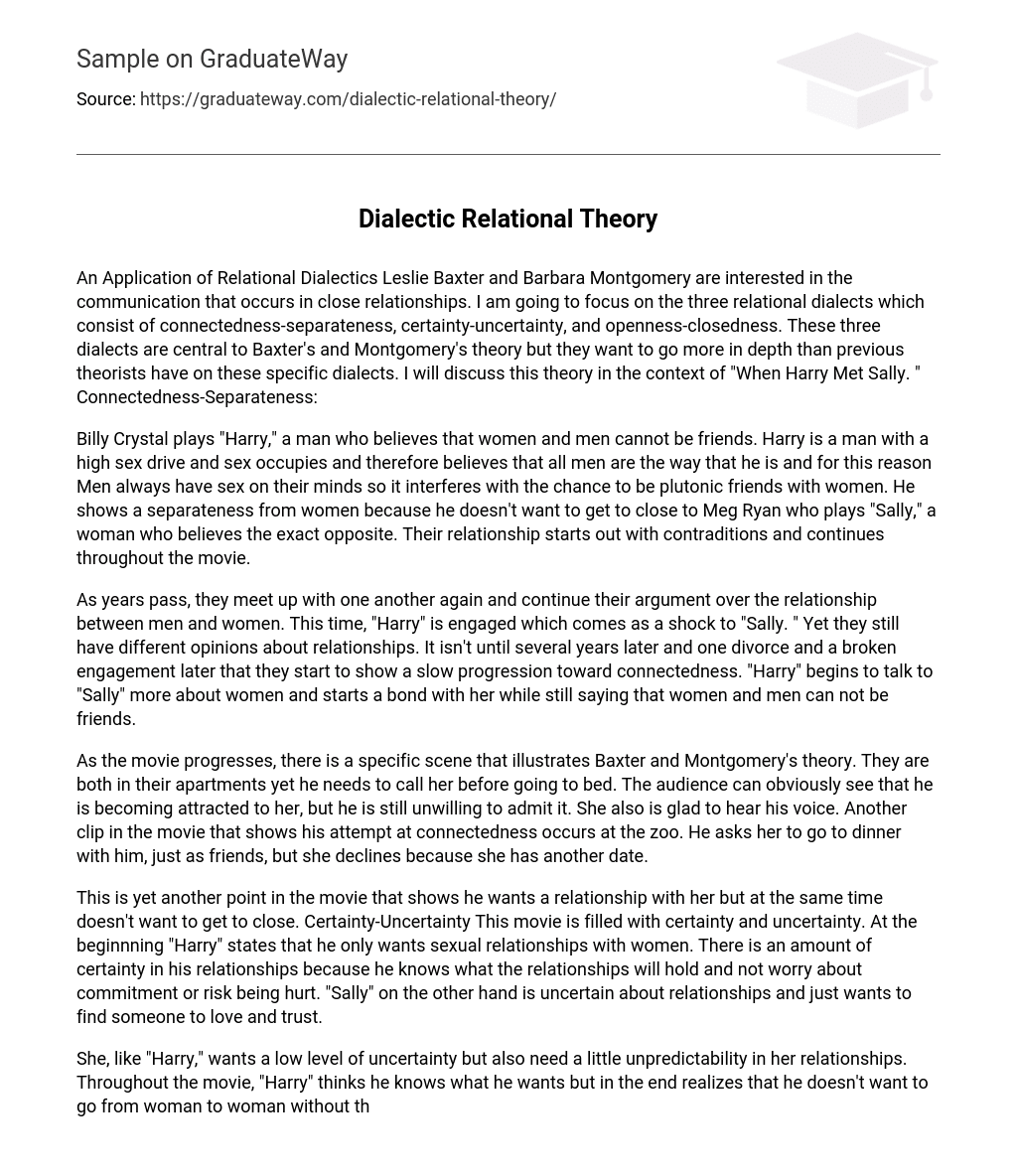An Application of Relational Dialectics: Leslie Baxter and Barbara Montgomery investigate communication in close relationships, specifically focusing on three relational dialects – connectedness-separateness, certainty-uncertainty, and openness-closedness. Unlike previous theorists, Baxter and Montgomery delve deeper into these dialects. In the context of the film “When Harry Met Sally,” I will explore their theory.
Billy Crystal stars as “Harry,” a character who firmly believes that men and women cannot have true friendships. He is driven by his strong sexual desires, which he thinks all men share. Consequently, he feels that thoughts of sex always hinder the possibility of maintaining platonic relationships with women. This mindset causes him to distance himself from Meg Ryan’s character, “Sally,” who holds the exact opposite belief. From the beginning, their relationship is marked by contradictions, a theme that persists throughout the movie.
Over time, they reunite and persist in their discussion about the connection between men and women. Surprisingly, “Harry” is now engaged, which astonishes “Sally”. Despite this, their views on relationships remain divergent. However, after several years, a divorce, and a failed engagement, they gradually start to move towards closeness. “Harry” begins engaging in conversations with “Sally” about women and forms a bond with her, yet he still maintains that friendship between men and women is impossible.
In the movie, Baxter and Montgomery’s theory is illustrated through a specific scene. Despite being in their separate apartments, Baxter feels the need to call her before going to bed. It is evident to the audience that he is growing attracted to her, but he remains reluctant to acknowledge it. Likewise, she is pleased to hear his voice. Another scene at the zoo depicts his efforts in establishing a connection. He invites her for dinner as friends, but she declines due to having another date.
This is another instance in the movie where it is evident that he desires a relationship with her, but also wants to maintain some distance. The movie contains both certainty and uncertainty. At the start, “Harry” firmly declares his preference for purely sexual relationships with women. There is a sense of assurance in his approach as he knows exactly what to expect from these relationships, without having to worry about commitment or the possibility of getting hurt. Conversely, “Sally” is unsure about relationships and simply yearns to find someone to love and trust.
She, like “Harry,” desires a moderate level of certainty but also craves some unpredictability in her relationships. In the film, “Harry” believes he knows what he desires, but eventually recognizes that he doesn’t want to engage in casual relationships without any commitment or unpredictability. “Sally” provides him with this blend of assurance and unpredictability that he desperately desires. By the conclusion of the movie, he finally confesses to her that he cannot imagine life without all the insignificant and extraordinary aspects of her personality.
She is unique because she diminishes his uncertainty about having a committed relationship with a woman, while demonstrating that they can be friends without sex and still have a loving intimate relationship. The film presents instances of both openness and closedness between them. The first time Sally opens up to Harry occurs in the diner, where she confesses to having had sex and shares a personal aspect of her life. Similarly, Harry is open about his sexual relationships but avoids revealing his emotions by treating the situation lightly. Although Harry appears open, he only confides his true feelings to one close male friend. Sally, on the other hand, remains open throughout the movie, expressing her feelings from the start. However, she does close herself off from Harry when it comes to acknowledging her feelings for him. This may be due to either her lack of conscious awareness or her denial of these emotions.





